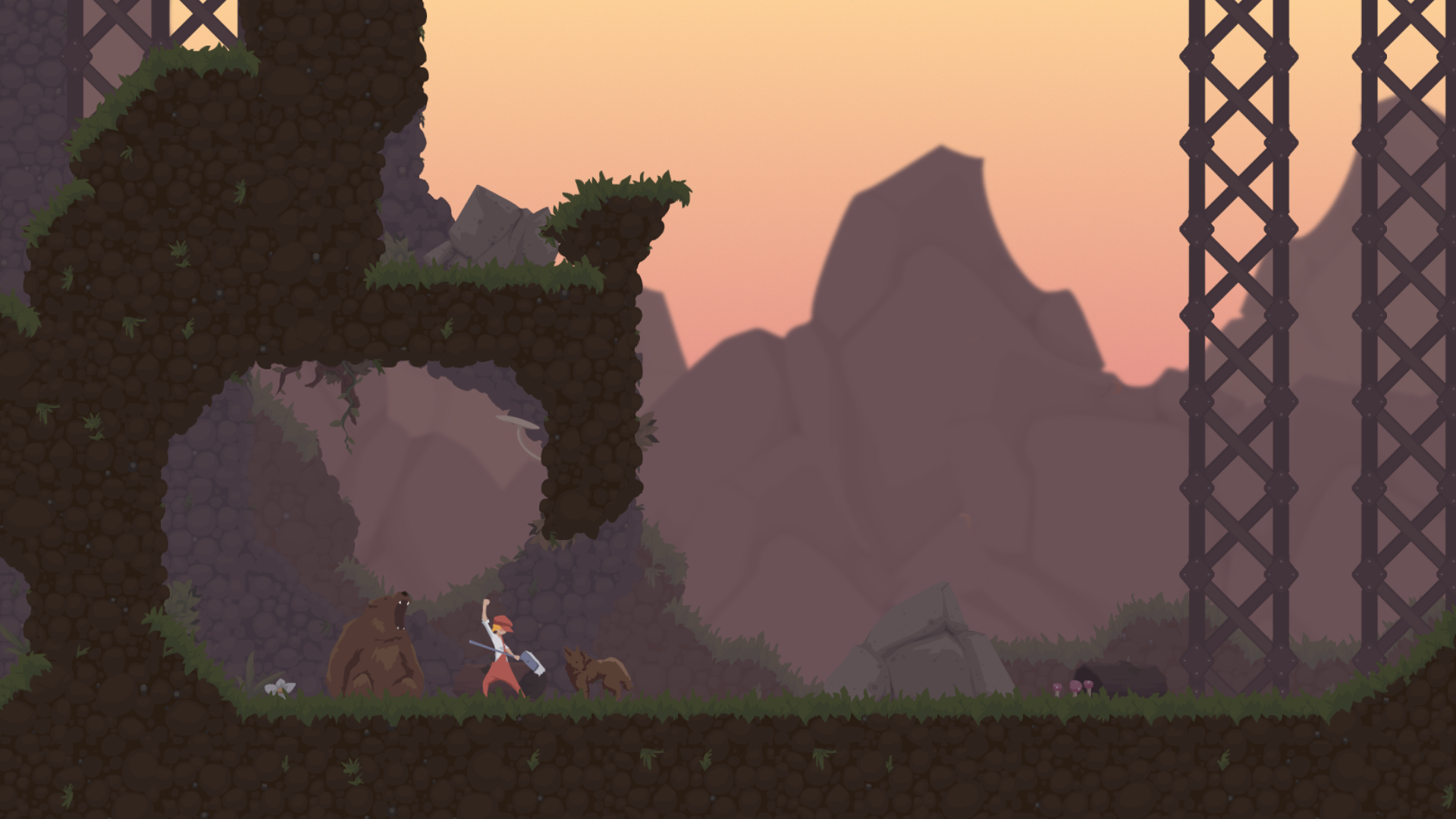I typically loathe difficult games.
In part because designing challenges is difficult. Technology being what it is, computers can’t match a hand-tailored stage design or a human’s variations in play. Strategies like flanking, abstract technique, guerrilla tactics, and disparate formations lay beyond the reach of A.I. So, in order to develop something that’s “hard” for a player without another player behind it, many games develop their challenges by creating tedious, powerful hurdles for the players. Enemies gain more health, hit harder, attack more aggressively. Often in tandem with this, player characters are made weaker, given fewer upgrades, and easier and more powerful techniques are rendered obsolete by higher difficulties’ lightning reaction times.
Where it comes to stage design, a clever problem will get the player asking questions: “So if this button must be held to open that door, how do I both hold it and reach the door to go through?” or “Can I move something to get high enough to jump over this wall?” Giving the players a reason to want to enjoy a puzzle is often the best technique for making the puzzles feel valuable. Puzzles that are less clever often emphasize that a problem exists, and slap down players who attempt to ignore or bypass the problem unsolved. Some stage designs are only valuable because a problem was placed there, rather than being worthwhile to visit otherwise.

For me, those kinds of difficulty isn’t endearing, or really all that fun. Higher difficulty games (and game modes) have always felt like exercises of frustration for me. I find very little value out of playing a game on harder difficulties because the parameters are often weighted against me in order to make the challenges seem more dire, when the circumstances are simply mundane but dressed as something more terrifying. Playing Call of Duty 4: Modern Warfare on Hardened, for instance, offers no variation on enemy team tactics. Pre-scripted enemies still wash out in infinite spawns, they just shoot better, hurt more, and bleed less. Their tactics don’t change, their maneuvers remain identical yet also miraculously more deadly, and their technical precision becomes more inhuman.
Stage design and enemy difficulty should exist to bolster a player’s experience, give some tension to the conflict of the scene. However, higher difficulties built on larger numbers or faster reaction times often necessitate playing more ruthlessly. At a certain level, player fun cedes ground to efficiency. Engineering an efficient playerbase creates a mechanical reason to improve, certainly, but does nothing for the quality of that experience in getting there. Instead, it creates an out group: the have-nots who don’t have the levels, equipment, or endurance to grind out the technique necessary to survive the artificially inflated challenges.
In single player games, having a stage or enemy design built with this ethos in mind is a recurring frustration, at least for me. I don’t enjoy struggling to surpass an obstacle that seems custom-designed to frustrate me. I don’t enjoy feeling like the game understands my tools, and designs everything to spite me for weaknesses in them. The tools weren’t necessarily my choice, and having their flaws repeatedly thrown in my face just makes me grow to despise them.
Which is something of a strange response to have to a piece of media. Instead of delighting in having new challenges and puzzles to wrap my technical, dexterous, or mental skills around, it feels like something I want to be petty about. My desire to win comes from a place of scorn, or malice. I want to spite the stage or challenge because it keeps frustrating me.
There is a tableau I imagine I would see in a mirror, toward the end of a long string of challenges that feel unfair. Seeing my height wrapped over and around the controller, my chair’s back going unused. My shoulders are high, and tense, my legs bouncing to stave off excess desire to expend energy. The look in my eyes, through the halogen glow of monitor or television, is one locked between fury and forlornness. The plastic of the buttons creak as my inputs are no doubt harder and louder than absolutely necessary. Then, all at once, an explosion of motion. “Yes!” My shadowy form might yell, tossing the controller slightly recklessly onto a cushioned surface. “In your face, game! That stage sucked almost as much as you do for putting me through it!”

That is a visual that I have no particular pride in, but it’s one that undoubtedly has some accuracy to it. A sign of the sort of person I expect most people imagine gamers in general to be: a more crude, more angry sort of person. Someone whose agency seems to be whether or not to get angry at problems that may arise.
Tricking me into being petty at a game is exactly the sort of experience I want to avoid when I unwind at the end of a day. I don’t want to settle in with a game in order to develop a different irritation than the ones my day produces. There are a lot of trappings of difficulty that rely on these sorts of mechanics in order to create a challenge that can stay ahead of any given player. Difficulty that uses better A.I., or more savvy challenges by forcing the player to use more tools more widely, or different ones sequentially, are rather rare beasts.
Having to trick a challenge into letting me move past it isn’t very fun. I’d much prefer to be treated.
Written for Critical Distance‘s Blogs of the Round Table under the “Tricks and Treats” theme. If this is up your alley, go give the other pieces a read.
Taylor Hidalgo is a freelance writer, editor, and Features Editor at Haywire Magazine. He finds he has a love of visual design, narrative craft, and making new friends on Twitter.

Thoughts?